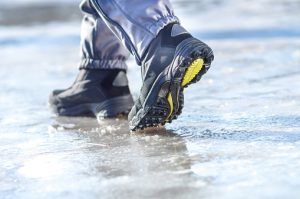Providence Employees Face Work Injury Risks in Cold Weather
 As winter weather approaches, Providence workers who do their jobs outdoors face the threat of a workplace injury due to cold-related accidents and illnesses. There are some workers, however, who face cold conditions in their jobs every day, even during the summer months. These workers include people who do jobs in refrigerated spaces, such as those who work in the catering or food preparation industries or those who work performing scientific testing in cold environments.
As winter weather approaches, Providence workers who do their jobs outdoors face the threat of a workplace injury due to cold-related accidents and illnesses. There are some workers, however, who face cold conditions in their jobs every day, even during the summer months. These workers include people who do jobs in refrigerated spaces, such as those who work in the catering or food preparation industries or those who work performing scientific testing in cold environments.
When workers do their jobs in cold conditions, there is always a risk of harm. Safety BLR provides information on some of the dangerous work conditions employees face when they do their jobs in the cold. Suggestions and tips are also offered from National Institute for Occupational Safety, which has recently issued guidelines for employers to follow when it comes to protecting the health and safety of employees who perform work tasks in cold indoor environments.
What Employers Should Do to Keep Workers Safe in Cold Environments Indoors
A survey of food preparation workers who do their jobs in cold indoor spaces revealed the workers experienced discomfort as a result of the low environmental temperatures they were repeatedly subject to for hours on end. Some employees who perform work in cold environments do their jobs in refrigerated spaces for eight or more hours per day. Employees also reported insufficient use of gloves as a result of a need to do jobs requiring manual dexterity, and indicated drafts and condensation added to their discomfort.
Accidents can happen when cold employees try to do food preparation tasks with cold hands, such as cutting up food items. The hands may not function as well due to the cold and a knife could slip. Employees could also face a variety of other illnesses and injuries directly attributed to the cold conditions in their workplace. Suggestions from NIOSH on keeping workers in cold environments safe include:
- Making use of equipment in cold environments which is designed to reduce drafts and limit the formation of condensation. This will help prevent cold-air bursts and wet clothing.
- Ensuring employees have sufficient time to change out of wet clothing when leaving cold environments, and training employees that changing clothes is the proper protocol.
- Making it possible for employees to wear gloves even when engaging in tasks in cold environments requiring manual dexterity. Thinner gloves and fingerless gloves should be offered to workers. For those in food service, these gloves can be worn underneath required plastic gloves.
- Reducing the amount of work to be done in cold spaces which requires manual dexterity.
- Giving employees the opportunity to rotate their work tasks between cold and warm areas so they get a break to return their body to normal temperature.
- Locating hand warmers outside of cold rooms and encouraging employees to routinely use the hand warmers as they do their jobs.
- Providing sufficient training on risks of cold stress and on precautions employees can take.
By following these simple protocols, employees who perform work in cold rooms can be kept safer from harm.
